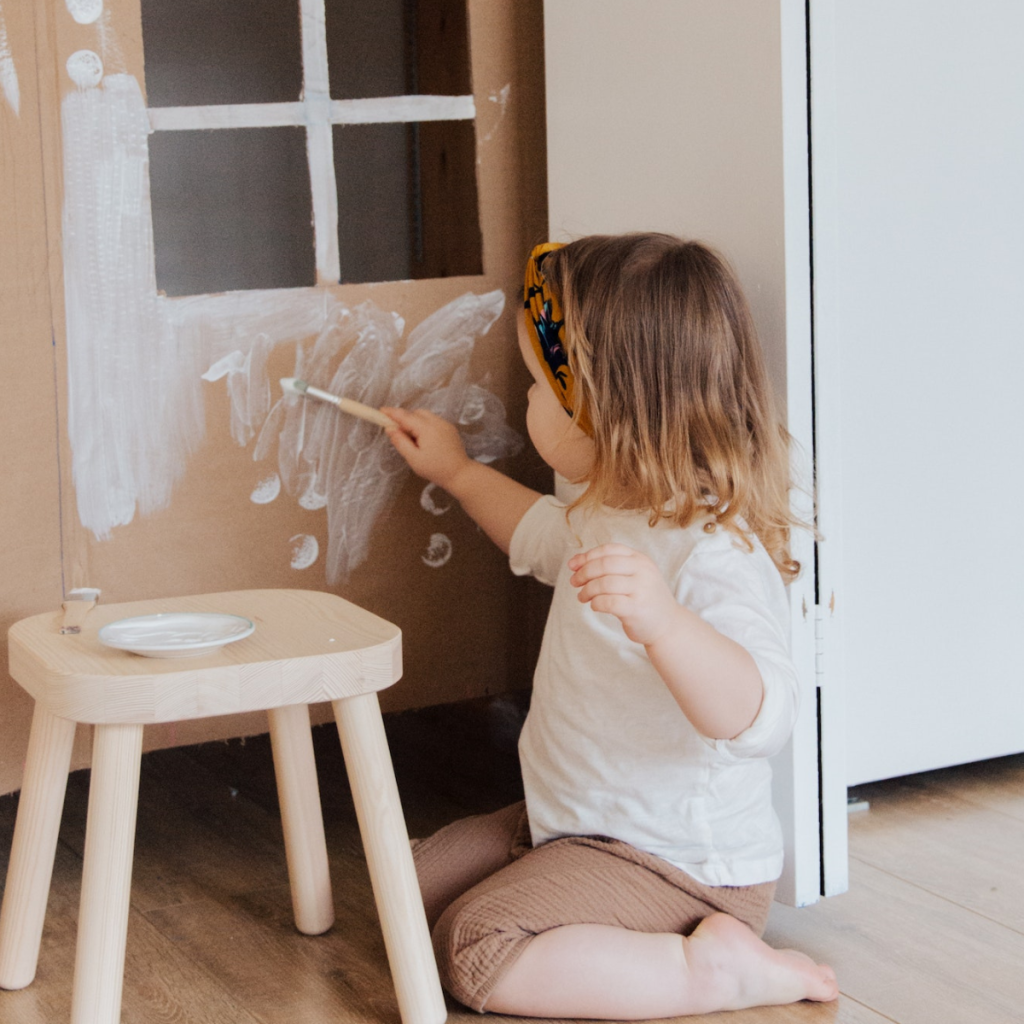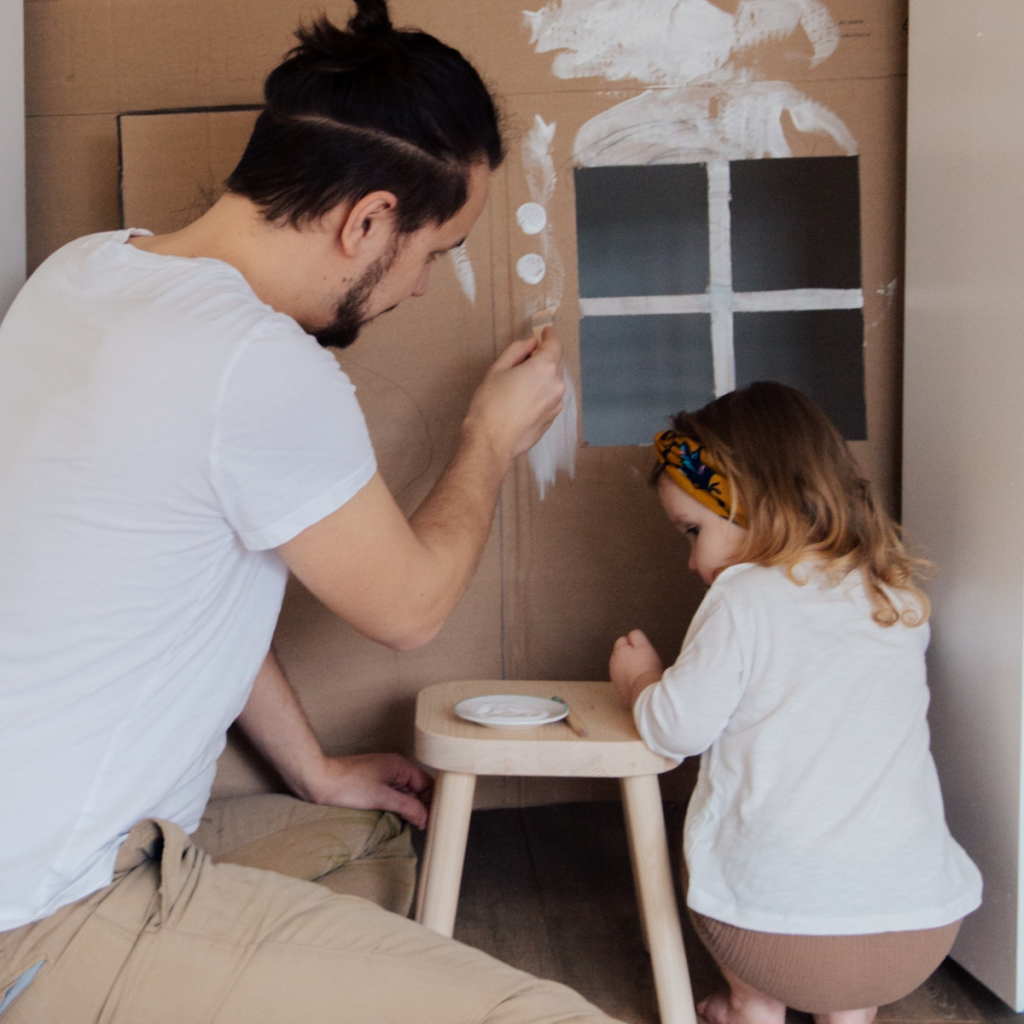Discover effective techniques and tips on how to teach painting to a 3-4 year old child.
How to Teach Painting to a 3-4 Year Old Child
Teaching painting to a 3-4 year old child can be a delightful and rewarding experience. Not only does it encourage their creativity and self-expression, but it also helps in their cognitive and physical development. In this article, we will explore the various aspects of teaching painting to young children, from understanding their artistic abilities to setting up a child-friendly painting environment, introducing painting to your little one, teaching basic painting techniques, and encouraging creativity and expression. So, let’s dive in and explore the colorful world of teaching painting to young children!
Understanding the Artistic Abilities of a 3-4 Year Old
Before we embark on this artistic journey, it’s important to understand the artistic abilities of a 3-4 year old. At this age, children are exploring the world around them, including art. They are constantly discovering new shapes and colors, and their imagination knows no bounds. So, let’s take a closer look at how cognitive development and physical abilities play a role in their art creation.

Cognitive Development and Art
When it comes to cognitive development, painting can help enhance a child’s thinking and problem-solving skills. Through art, they learn to observe, analyze, and make decisions. Painting also helps improve their hand-eye coordination, as they try to manipulate brushes and mix colors. As they create their masterpieces, their spatial awareness and ability to express emotions also improve.
As children engage in artistic activities, their cognitive abilities are stimulated. They learn to think critically and make choices about colors, shapes, and composition. Through experimentation, they discover cause and effect relationships, such as how mixing different colors can create new shades. This process encourages their curiosity and fosters their ability to think creatively.
Furthermore, art allows children to express their thoughts and emotions, even before they have developed the vocabulary to do so verbally. It becomes a powerful tool for communication, as they can convey their feelings through the strokes of a paintbrush or the scribbles of a crayon. This helps them develop their emotional intelligence and self-awareness.
Physical Abilities and Art Creation
Young children at this age are still developing their fine motor skills. Painting provides them with an excellent opportunity to practice holding brushes, controlling their movements, and developing hand and finger strength. It’s a great way for them to refine their motor skills while having fun and creating beautiful artwork.
As children engage in art activities, they learn to grip and manipulate different art tools, such as brushes, crayons, and markers. This helps improve their hand dexterity and coordination, as they learn to control the pressure and direction of their strokes. They also develop their hand and finger strength, which is essential for tasks like writing and tying shoelaces.
Moreover, art encourages children to explore different sensory experiences. They get to feel the texture of different art materials, such as the smoothness of paint or the roughness of paper. This sensory exploration not only enhances their tactile perception but also stimulates their creativity and imagination.
Artistic activities also promote gross motor skills development. For instance, children may need to move their whole body to create large-scale paintings or use their arms and shoulders to make broad brushstrokes. These movements help improve their coordination and balance, as well as their overall physical fitness.
In conclusion, the artistic abilities of 3-4 year olds are shaped by their cognitive development and physical abilities. Through art, children enhance their thinking skills, problem-solving abilities, hand-eye coordination, and spatial awareness. They also develop their fine motor skills, hand and finger strength, and sensory perception. Engaging in artistic activities not only allows them to express their emotions but also promotes their overall physical and cognitive development.
Setting Up a Child-Friendly Painting Environment
Creating a child-friendly painting environment is not only essential for fostering creativity but also for ensuring a fun and safe experience for your little Picasso. By taking a few important considerations into account, you can set up an art space that will inspire and protect your child’s artistic endeavors.
Choosing the Right Materials
When it comes to materials, it is crucial to select non-toxic, child-safe paints and brushes. Children often have a tendency to put things in their mouths, so using paints that are free from harmful chemicals is of utmost importance. Additionally, opt for washable paints, as things can get messy during art sessions. This way, you can easily clean up any accidental spills or smudges without worrying about permanent stains on clothes or furniture.
Consider providing your child with a variety of brushes to explore different painting techniques. From broad brushes for bold strokes to fine brushes for intricate details, having a range of brush sizes will allow your child to experiment and develop their artistic skills. Furthermore, using thick paper or canvas boards as painting surfaces will give their artwork a proper foundation to flourish. These materials are more durable and can withstand the enthusiasm and creativity of young artists.
Don’t forget to have plenty of paper towels or wet wipes handy for quick cleanup! Accidents are bound to happen, and having these supplies readily available will make it easier to wipe away spills, clean brushes, and keep the art space tidy.
Safety Measures in the Art Space
Childproofing the art space is crucial to avoid any accidents and ensure a worry-free painting experience. Start by keeping small objects, such as loose beads or small toys, away from the painting area. These objects can pose choking hazards, and it’s important to create a safe environment where your child can focus on their artwork without any potential dangers nearby.
Consider covering the table or floor with a plastic sheet to protect them from spills and splatters. While washable paints make cleanup easier, accidents can still happen, and having a protective barrier will save you from unnecessary stress and potential damage to your furniture or flooring.
Always supervise your child during their painting sessions to ensure their safety. While it’s important to encourage their independence and creative expression, young children may need guidance in handling materials and understanding safety precautions. By being present and attentive, you can provide the necessary support and intervene if any potential hazards arise.
Creating a child-friendly painting environment goes beyond providing the necessary materials and safety measures. It is an opportunity to cultivate a love for art, self-expression, and creativity in your child. By setting up an inviting and secure space, you are fostering an environment where their imagination can soar, and their artistic skills can blossom.
Introducing Painting to Your Child
Now that we have our child-friendly painting space set up, it’s time to introduce your child to the world of painting. Here are a few suggestions:

First Steps in Painting
Start by demonstrating the basic techniques, such as how to hold a brush and how to make simple strokes. Allow your child to explore the paints and brushes on their own. Remember, the process is more important than the end result. Encourage them to experiment and express their creativity freely.
As your child begins to explore the world of painting, it’s important to foster a sense of curiosity and wonder. Talk to them about different colors and how they can be mixed to create new shades. Show them how different brush strokes can create different textures and effects on the canvas. By introducing them to these foundational techniques, you are laying the groundwork for their artistic journey.
Another great way to engage your child in the painting process is by incorporating storytelling. Encourage them to paint scenes from their favorite books or create their own imaginative worlds. Ask them questions about the characters or objects they are painting, and let their imagination take flight. This not only enhances their storytelling skills but also adds depth and meaning to their artwork.
Making Art Fun
Make painting sessions enjoyable and exciting for your child. Play some upbeat music in the background or create fun themes for their artwork. Experiment with different painting tools, like sponges or cotton swabs, to add variety and spark their imagination. Surprise them with little rewards or praise their efforts to keep their motivation high.
One way to make painting sessions more interactive is by organizing art challenges or games. For example, you can set a timer and challenge your child to complete a painting within a certain time frame. This not only adds an element of excitement but also helps them develop their time management skills. You can also create themed painting sessions, where your child has to paint something related to a specific topic or concept. This encourages them to think creatively and explore different subject matters.
Remember, the key to making art fun for your child is to let them take the lead. Allow them to choose the colors, subjects, and techniques they want to explore. This sense of ownership and autonomy will not only make them more engaged but also boost their confidence as budding artists.
Teaching Basic Painting Techniques
As your child gains confidence and becomes more comfortable with painting, it’s time to introduce them to some basic painting techniques.
Brush Strokes for Beginners
Show them various brush strokes they can try, such as straight lines, curved lines, and zigzags. Encourage them to use different brushes and experiment with different brush sizes to create different effects. Painting is all about exploring and discovering new techniques, so let their imagination run wild!
Mixing Colors: A Basic Guide
Teach your child the magic of color mixing by showing them how primary colors can be mixed to create secondary colors. Let them experiment with mixing paints on a palette or directly on their artwork. This is a great opportunity to introduce them to the color wheel and how different colors work together.
Encouraging Creativity and Expression
As a parent or teacher, it’s important to foster your child’s creativity and allow them to express themselves freely through art. Here are a few ways you can encourage their artistic journey:
Fostering Artistic Freedom
Avoid imposing too many rules or restrictions on their artwork. Give them the freedom to choose their subjects and explore their own unique style. Celebrate their imagination and encourage them to think outside the box. Let their artwork reflect their unique perspective on the world.
Dealing with Frustration and Art Blocks
Just like adults, children can also experience frustration and art blocks. Encourage them to embrace mistakes and learn from them. Help them overcome any obstacles they encounter during their creative process. Whether it’s a lack of inspiration or a challenging technique, be there to support and guide them, reminding them that art is all about having fun and expressing themselves.
Teaching painting to a 3-4 year old child is not only a creative activity but also a wonderful bonding experience. Through painting, children explore their imagination, enhance their cognitive and physical abilities, and express themselves freely. So, gather your paints, brushes, and eager young artist, and embark on this colorful journey together! Happy painting!



